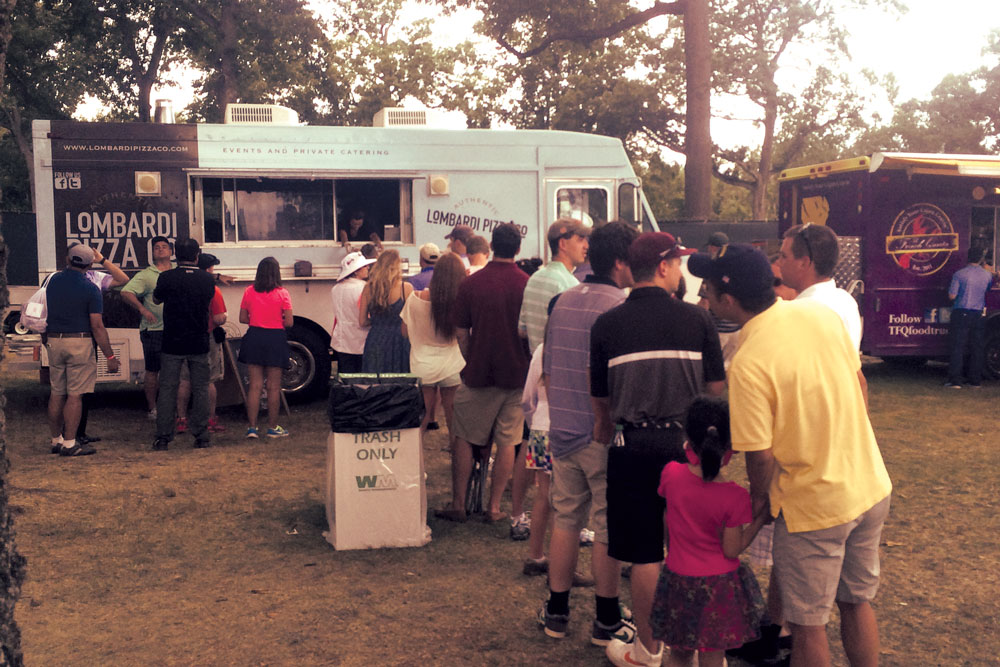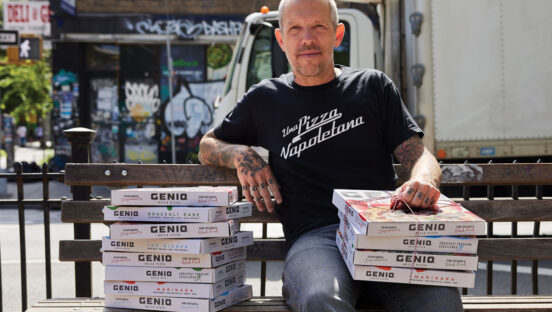Food trucks may have existed for decades, but they really exploded onto the scene in the 2000s, appealing to recession-weary operators looking to dive into the restaurant business with less risk than required for brick-and-mortar outlets. But mobile units were a decided departure from the “roach coaches” of earlier times; instead, these meals-on-wheels specialists churned out gourmet grilled cheeses, farm-to-table fare and, yes, wood-fired pizzas.
Granted, competition has stiffened, but the segment has enjoyed remarkable growth. According to mobile-cuisine.com, food trucks raked in $1.2 billion in 2015, a 12.4% revenue increase over the past five years. However, like in any restaurant business, success can prove elusive without the right game plan. Here, three successful operators share how they turned their free-wheeling pizzerias into steady moneymakers.
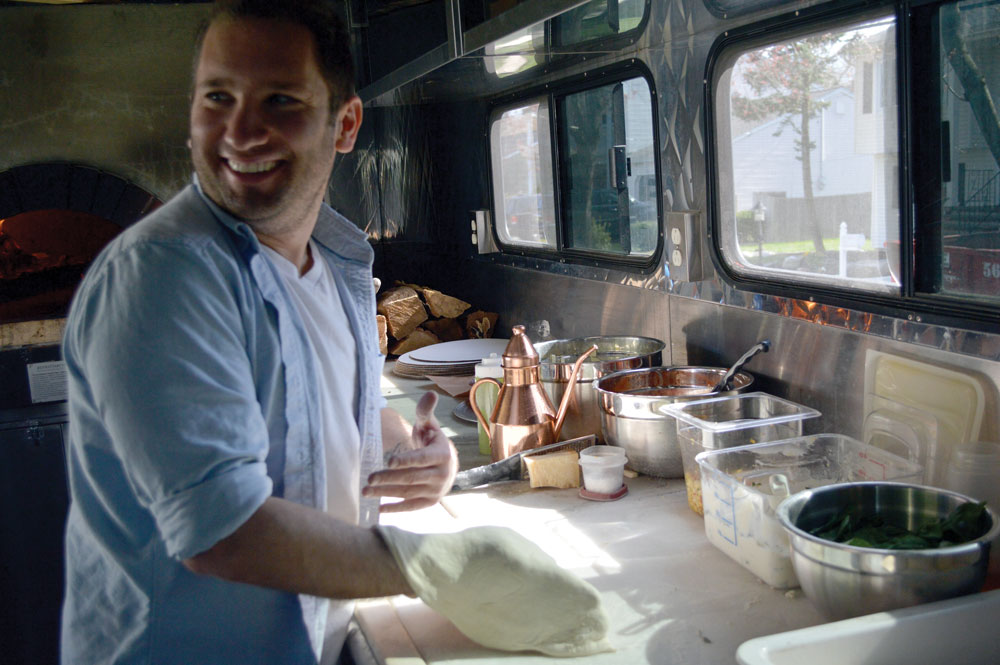 |
|
Some food truck operators, such as Lombardi Pizza Co., also establish a brick-and-mortar location to supplement business during off seasons. |
Hybrid Vehicles
Peter Lombardi, Chef and Owner
Lombardi Pizza Co., Martinsville, NJ
I started my business in 2011 when I found an old moving truck on eBay. I had it all customized, with pretty much an entire kitchen inside, including wood-fired oven, refrigerators, freezers, sinks—the whole nine yards. That took about five months. With an old truck, something is always in need of repair. I like to pick one big thing every couple months to take care of so that I’m not hit at once with a ton of repairs. One rule: Always expect the unexpected to break.
Our success is almost entirely driven by word-of-mouth. I’m not really a fan of paying for ads, articles, etc. Anyone can buy page space that says, “We’re the Best.” Personally, those ads turn me off—I feel it cheapens your business. I also think customers are smart; they can smell when an ad was purchased vs. a legitimate good review. When someone tells me firsthand about how good a food truck or restaurant is, that holds a lot of weight. Although it may take longer to grow without paying for advertisement, I feel a better sense of accomplishment when customers hear about us from other happy customers.
But food trucks are difficult for a couple reasons. A lot of laws are outdated when it comes to running a food truck. Permits can tend to be a big headache. You can’t just pull up on a corner and start selling food—I wish it were that easy! You need permits and inspections for everything, and those all cost money.
We’re not like most food trucks, in the sense that we don’t normally “street vend.” We focus primarily on private parties, weddings, birthdays, bat mitzvahs, business events, etc. This eliminates the risk for us. We’re paid to cater a party for a given number of people, so whether one or 100 people eat, we’re still paid for the agreed amount. We also have a brick-and-mortar restaurant, which helps eliminate waste. If we have extra ingredients left over from a truck event, they’re put back into the restaurant.
Food trucks are also hard in New Jersey because you have a big off season. I often tell people that if they’re interested in getting a food truck, they should move to warmer weather, somewhere you can run the truck at full capacity year-round. Luckily, I have a restaurant that can float me through the colder months.
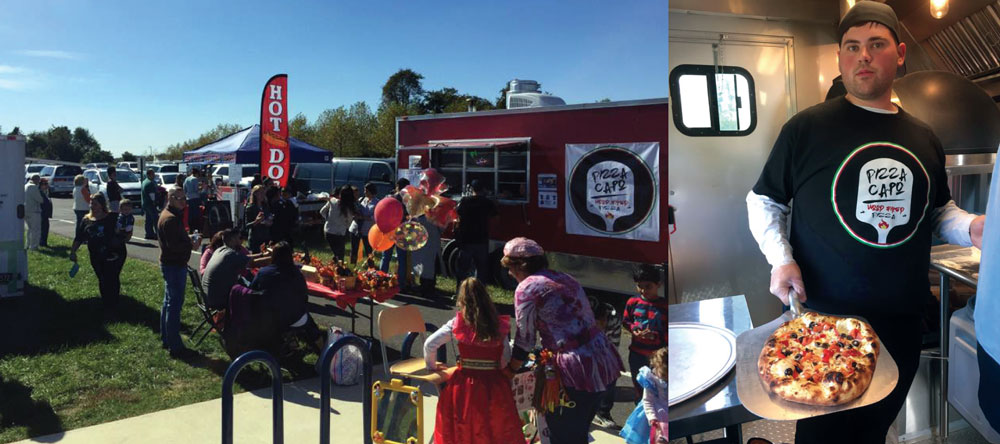 |
|
Pizza Capo, an icy-hot combo selling wood-fired pies and Italian ices, finds success by scouting ideal locations, accurately forecasting sales and focusing on quality. |
Fire and Ice
Sue Gochenaur, office manager; Anthony Rohrer, owner/pizzaiolo/operator; Lou Rohrer, research/ development/pizzaiolo; Aaron Rohrer, pizzaiolo
Pizza Capo, Newark, DE
We’re a small, family-operated company and got started in the mobile business in 2015 when we purchased a used, custom-made frozen dessert cart to serve hand-scooped Italian ice for public and private events. We quickly learned that we could be more versatile if we could offer food as well and knew right away that we wanted to serve pizza. We asked customers what they thought, with enthusiastic responses, and decided to offer wood-fired pizza. We had a custom-made concession trailer built with a wood-fired oven inside, and Rohrer’s Italian Ice became Pizza Capo. In our very first event serving pizza, we came in second place in the professional category for the Scrapple Cook Off Contest.
Family is essential to our success; this business couldn’t run as smoothly without each family member contributing to the operation. Another key is our commitment to serving only the best ingredients. Pizza is a very competitive business, and we want to stand apart from the rest. We also listen to customer feedback, always learning and adapting to suit our customers’ needs and wants and constantly innovating to come up with signature product offerings. Last but not least, it’s essential to be consistent.
One of the biggest mistakes we could have made: not talking to our health department prior to having our custom trailer built. Our state required preapproval to construct; they needed to review and approve the specs from top to bottom. Even our pizza had to go through a review to ensure it met food-grade requirements before we purchased the oven.
Forecasting and location are also critical, and there’s not much room for error. If we overprepare for an event, product gets wasted. If we underprepare, we lose sales. Location determines how successful an event will be. It’s difficult to figure out, but learning comes with experience. One mistake we made in our first event was offering only pies, not slices. We’re learning that at certain events, slices are the big hit, while at other events, pies are the bestsellers. Even the types of pies/slices that are more popular can vary from event to event.
We’re now able to serve almost year-round, with the exception of bad weather days. In addition to public events and catering, we’ve found a location where we can set up daily. We plan ahead for the off season by paying bills ahead when we can and saving during busy months. We also use the slower months to get scheduled for public events for the upcoming season and test new signature offerings to add to the menu.
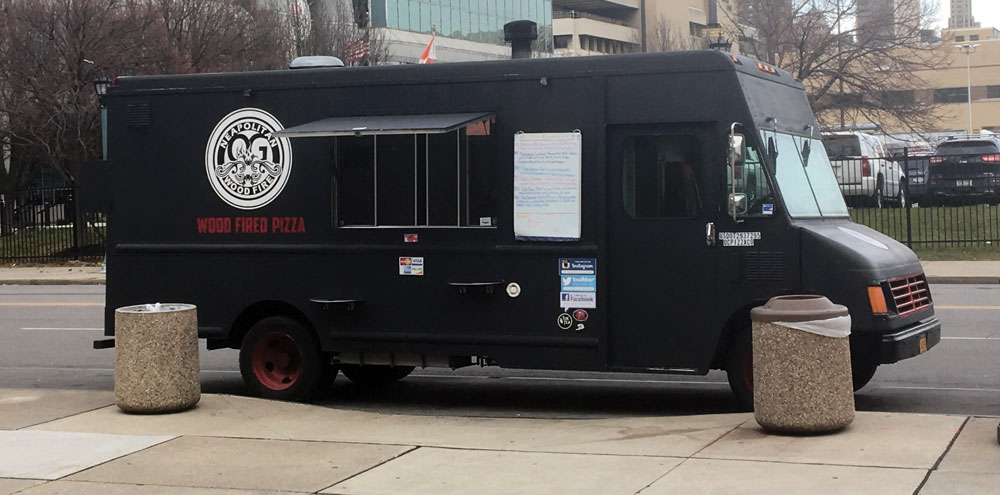 |
|
The O.G. Wood Fire Food Truck, offering both lunchtime and special-event service, spreads word-of-mouth by maintaining an active social media presence, snagging awards and staying in touch with local publications. |
Fair-Weather Affairs
Jay Langfelder, owner
The O.G. (One Goal) Wood Fire Food Truck, Buffalo, NY
I started in the foodservice industry working in mom-and pop pizzerias, then fine-dining restaurants, before I went to school and got a degree in hospitality management. After working in corporate environments, I decided to sell the pizza I wanted to sell.
This is our second season as a food truck, but pizza has always been a hobby of mine; I’ve made probably almost a million pizzas in my day! I’ve experimented with many recipes, but we do a Neapolitan-based pizza, with “00” flour and imported tomatoes, baked in a wood-fired oven on the truck.
We do lunches Monday through Friday, plus nighttime special events. In the summer months, we’ll have 12 or 14 events per week vs. five or six in the winter. That’s one of the challenges—weather here doesn’t cooperate for a year-round business. It’s also about getting the dough right. We’ve had to change our dough recipe after looking at the weather forecast, so consistency is a challenge. It might be 120° in the truck in July, or 30° in the winter, so we adjust the hydration or yeast in the dough to make it work. Or we might do small parties of 30, then the next day have 200 walk-up customers. Doing a cold ferment three to five days ahead of time requires a lot of guesswork; sometimes we sell out.
Providing the best quality has made us successful in one of the most competitive pizza markets in the country. Offering something different, keeping up with trends in the industry, and staying on the forefront (like farm-to-table or unique combinations) have also been key. We did a pop-up recently where we created famous pizzas from around the United States and had a great turnout.
We hit Twitter, Facebook and Instagram, having fun with it, asking people what pizzas they want to see and highlighting our quality ingredients. We also have a great relationship with local writers, and they’ve helped promote us quite a bit. We go after awards, like winning “best food truck” in local publications, to help spread the word. And our schedule is rotational, so people know where to find us.
You have to prepare yourself for the seasonality of this business when weather’s a factor. I see a lot of new food trucks go under because they committed too much start-up capital. We keep our costs low and our quality high; I even built the truck myself with my father. We load ourselves up in the summer, staying as busy as we can; you might do back-to-back 100-hour weeks, then work 30-hour weeks in winter.
The most important thing is to maintain good relationships with the places you want to be. People think they can just drive all over and blast it out on Twitter, but that’s not the case. Office lunches and catering keep you going, at least until your name’s established. Once people know you, you can go somewhere and people will show up.



